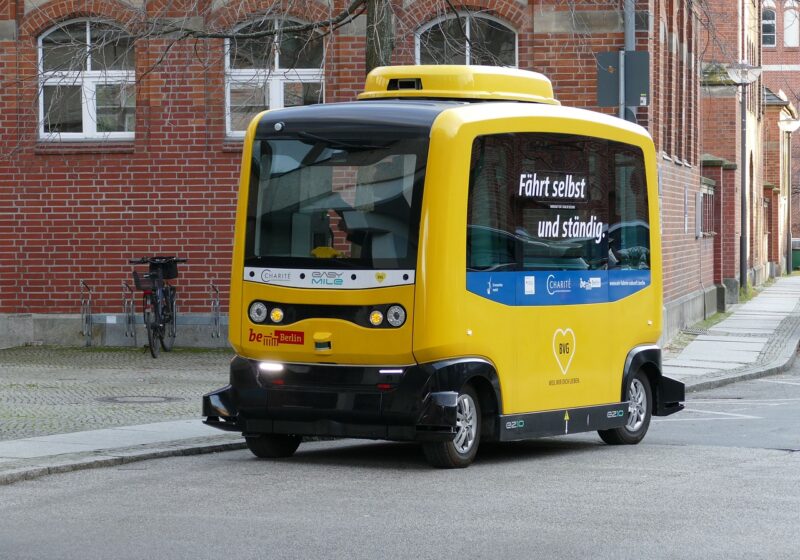The Future of Transportation: How AI and Autonomous Vehicles Will Change How We Travel
November 10, 2024

Transportation has always been an essential part of human civilization, enabling commerce, cultural exchanges, and social connections. With the rise of technologies such as artificial intelligence (AI) and autonomous vehicles (AVs), the landscape of transportation is on the brink of a monumental change. This article explores how AI and AVs are poised to redefine how we travel, enhancing safety, efficiency, and sustainability in the coming decades.
1. Understanding Autonomous Vehicles
Autonomous vehicles, or self-driving cars, are equipped with technology that allows them to navigate and operate without human intervention. They utilize a combination of sensors, cameras, and AI algorithms to understand their environment and make real-time decisions. The potential benefits of AVs include:
- Increased Safety: According to the National Highway Traffic Safety Administration, 94% of serious crashes are caused by human error. AVs can reduce accidents by eliminating dangerous behaviors such as distracted or impaired driving.
- Traffic Efficiency: AI algorithms can optimize traffic flow, reducing congestion and commute times. By communicating with each other and traffic management systems, AVs can adjust speeds and routes dynamically.
- Accessibility: AVs can provide greater mobility options for individuals who cannot drive, such as the elderly or disabled, thereby breaking down barriers to transportation access.
With these benefits, it’s clear that AVs have the potential to revolutionize how we travel.
2. The Role of Artificial Intelligence in Transportation
AI plays a crucial role in the functionality of autonomous vehicles. It processes vast amounts of data from various sensors in real-time, enabling vehicles to make informed decisions. Below are some key areas where AI is transforming transportation:
- Navigation and Mapping: AI-driven navigation systems are capable of analyzing traffic patterns and predicting congestion, allowing AVs to choose the most efficient routes. Mapping technologies such as LiDAR create detailed, three-dimensional representations of the environment, enhancing situational awareness.
- Predictive Analytics: By analyzing data from various sources, AI can predict potential obstacles and traffic behaviors, enabling vehicles to respond proactively rather than reactively.
- User Interaction: AI can enhance user experience in AVs by enabling natural language processing for voice commands and personalized travel recommendations based on user preferences.
The integration of AI in transportation not only enhances AV capabilities but also lays the groundwork for a smarter transportation ecosystem.
3. The Impact of AVs on Society and Economy
The widespread adoption of AVs is expected to have significant social and economic implications, including:
- Shifts in Job Market: While AVs could displace jobs in driving professions, new roles will emerge in data analysis, vehicle maintenance, and AV system development. As AV technology matures, job training programs will be essential for transitioning affected workers into new fields.
- Changes in Urban Design: With the efficiency of AVs, cities may need to rethink transportation infrastructure. Reduced parking needs could lead to more green spaces and pedestrian-friendly designs while improving the overall livability of urban areas.
- Environmental Benefits: AVs can contribute to a decrease in emissions by optimizing routes and promoting the use of electric vehicles (EVs). This can lead to more sustainable transportation systems that align with global climate goals.
As we navigate the challenges of transition, understanding the societal impact of AVs will be crucial for policymakers and urban planners.
4. Overcoming Challenges in AV Implementation
Despite their potential, the deployment of autonomous vehicles faces several challenges:
- Regulatory Hurdles: Governments need to create comprehensive regulations governing the operation of AVs. Establishing safety standards, liability issues, and ethical guidelines is paramount to fostering public trust and facilitating deployment.
- Consumer Acceptance: Public perception of AVs varies widely. Education and awareness campaigns will be critical to address common misconceptions and build confidence in the technology.
- Technological Limitations: AVs rely on technology that must continuously evolve. Improvements in AI, sensor technology, and communication systems are needed to ensure safe and effective operation in a wide range of environments and weather conditions.
Policymakers, industry leaders, and technologists must work collaboratively to address these challenges to fully realize the potential of autonomous vehicles.
5. The Future: An AI-Driven Transportation Ecosystem
As AI and AV technology continue to mature, we can anticipate a future where:
- Integrated Transportation Systems: AI will play a central role in connecting various modes of transportation—from public transit to personal vehicles—creating seamless travel experiences. Imagine booking a journey that combines bus, train, and AV without needing to switch apps or payment methods.
- Smart Cities: Urban areas will leverage real-time data from AVs and smart infrastructure to optimize traffic flow. This could reduce congestion and enhance public safety, leading to a more efficient urban environment overall.
- Personal Mobility as a Service (MaaS): The idea of ownership may shift towards a subscription-based model for personal mobility. Users might opt for on-demand access to various transportation services (ride-sharing, bikes, scooters, etc.), resulting in tailored travel solutions that cater to their needs.
The ongoing integration of AI and AVs will revolutionize how we perceive and engage with transportation, enhancing flexibility and sustainability.
Conclusion
The future of transportation lies at the intersection of artificial intelligence and autonomous vehicles. With the ability to make travel safer, more efficient, and sustainable, the potential impact of AVs on society and the economy is staggering. While we face challenges in terms of regulation, consumer acceptance, and technology, the collaborative efforts of stakeholders will pave the way for a new era in transportation. As we look ahead, embracing these innovations will not only change how we travel but redefine our communities and environments, creating a future where transportation works for everyone.






